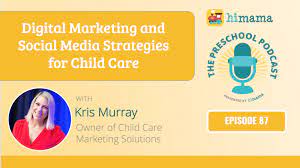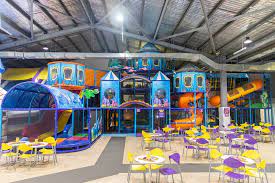
Unleashing the Power: Digital Marketing for Children’s Play Areas
Unlocking the Potential: Digital Marketing for Children’s Play Areas
In today’s digital age, it has become increasingly important for businesses to harness the power of online marketing to reach their target audience. Children’s play areas are no exception. With the right digital marketing strategies, these fun-filled spaces can attract more families and create a strong online presence. Let’s explore how digital marketing can unlock the potential of children’s play areas.
- Building a Captivating Website: A well-designed website is crucial for any business, including children’s play areas. It should be visually appealing and easy to navigate, providing essential information such as opening hours, pricing, and available activities. Incorporate eye-catching images and videos that showcase the excitement and joy children can experience at your play area.
- Optimizing for Local Search: Parents often search for nearby play areas when planning family outings or parties. Ensure your website is optimized for local search by including relevant keywords in your content and meta tags. Registering your business on Google My Business will also increase visibility in local searches.
- Engaging Social Media Presence: Social media platforms provide an excellent opportunity to connect with parents and showcase what makes your play area special. Create engaging content that highlights upcoming events, new activities, or promotions. Encourage parents to share their experiences by running contests or offering incentives for user-generated content.
- Online Advertising: Targeted online advertising can help you reach a wider audience and drive traffic to your website or social media pages. Platforms like Facebook Ads or Google Ads allow you to specify demographics such as location, age group, and interests, ensuring your ads are seen by the right people.
- Influencer Collaborations: Partnering with parenting influencers or family bloggers can significantly boost brand awareness for your children’s play area. These influencers have established trust with their followers and can help promote your business through sponsored posts or reviews.
- Email Marketing: Building an email list allows you to stay connected with your audience and inform them about upcoming events, special offers, or new attractions. Offer incentives such as exclusive discounts or early access to entice parents to subscribe to your newsletter.
- Online Booking and Reviews: Implement an online booking system that allows parents to conveniently reserve their visits in advance. Encourage satisfied customers to leave positive reviews on platforms like Google, TripAdvisor, or Yelp. Positive reviews will enhance your play area’s reputation and attract more families.
Remember, safety is paramount when marketing children’s play areas online. Ensure that all digital marketing efforts comply with privacy laws and prioritize the protection of children’s personal information.
By embracing digital marketing strategies, children’s play areas can effectively reach their target audience, increase brand visibility, and ultimately attract more families through their doors. So go ahead and unlock the potential of digital marketing for your children’s play area – a world of adventure awaits!
Frequently Asked Questions: Digital Marketing for Children’s Play Areas in the UK
- How can I use digital marketing to promote my children’s play area?
- What are the best digital marketing strategies for a children’s play area?
- How can I measure the success of my digital marketing campaigns for a children’s play area?
- What are the benefits of using social media for a children’s play area?
- How can I create an effective website for my children’s play area?
How can I use digital marketing to promote my children’s play area?
Promoting your children’s play area through digital marketing can be a powerful way to attract families and increase awareness of your business. Here are some effective strategies you can use:
- Build a Captivating Website: Create a visually appealing and user-friendly website that showcases the unique features and activities of your play area. Include essential information such as opening hours, pricing, and safety measures. Use high-quality images and videos to highlight the fun experiences children can have at your play area.
- Utilize Social Media Platforms: Establish a strong presence on popular social media platforms like Facebook, Instagram, and Twitter. Regularly post engaging content that showcases the activities, events, and promotions happening at your play area. Encourage parents to share their experiences by using hashtags or running contests.
- Targeted Online Advertising: Use platforms like Facebook Ads or Google Ads to target specific demographics such as location, age group, and interests. Create eye-catching ads that highlight the unique aspects of your play area and drive traffic to your website or social media pages.
- Collaborate with Influencers: Partner with parenting influencers or family bloggers who have a substantial following in your target market. Collaborate with them on sponsored posts or reviews to reach their audience and generate buzz around your play area.
- Implement Email Marketing: Build an email list by offering incentives for parents to subscribe to your newsletter, such as exclusive discounts or early access to events. Send regular updates about upcoming events, special offers, or new attractions to keep families engaged.
- Online Booking System: Implement an online booking system that allows parents to conveniently reserve their visits in advance. Make sure it is easy-to-use and mobile-friendly for a seamless booking experience.
- Encourage Online Reviews: Ask satisfied customers to leave positive reviews on platforms like Google My Business, TripAdvisor, or Yelp. Positive reviews will enhance your play area’s reputation and attract more families.
- Engage with Online Communities: Participate in parenting forums, local community groups, and online platforms where parents discuss family-friendly activities. Share valuable insights, answer questions, and promote your play area when appropriate.
- Collaborate with Local Businesses: Forge partnerships with local businesses such as schools, daycares, or family-oriented establishments. Cross-promote each other’s offerings through joint marketing efforts or special discounts for customers who visit both businesses.
- Monitor and Analyze Results: Regularly track the performance of your digital marketing efforts using tools like Google Analytics or social media insights. Adjust your strategies based on the data to optimize your campaigns and maximize results.
Remember to prioritize safety and comply with privacy laws when implementing digital marketing strategies for children’s play areas. With a well-executed digital marketing plan, you can effectively promote your play area, attract more families, and create a thriving business.
What are the best digital marketing strategies for a children’s play area?
When it comes to digital marketing strategies for a children’s play area, there are several effective approaches that can help you reach your target audience and drive more families to your establishment. Here are some of the best strategies to consider:
- Engaging Website: Create a visually appealing and user-friendly website that showcases the fun and excitement of your play area. Include clear information about activities, pricing, opening hours, and any special events or promotions.
- Local SEO: Optimize your website for local search by incorporating relevant keywords, updating meta tags, and ensuring accurate contact information. Register your business on Google My Business to improve local visibility.
- Social Media Presence: Establish an active presence on popular social media platforms such as Facebook, Instagram, and Twitter. Share engaging content like photos, videos, and stories that highlight the unique experiences available at your play area. Encourage user-generated content by running contests or featuring customer testimonials.
- Paid Advertising: Utilize targeted online advertising through platforms like Facebook Ads or Google Ads to reach parents in your local area. Set specific demographics such as location, age group, and interests to ensure your ads are seen by the right audience.
- Influencer Collaborations: Partner with parenting influencers or family bloggers who have a strong online presence and engage with their followers regularly. Sponsored posts or reviews from these influencers can help increase brand awareness and attract new customers.
- Email Marketing: Build an email list of interested parents by offering incentives such as exclusive discounts or early access to events when they sign up for your newsletter. Use email marketing campaigns to share updates about upcoming events, new attractions, or special offers.
- Online Booking System: Implement an easy-to-use online booking system that allows parents to conveniently reserve their visits in advance. This not only enhances the customer experience but also helps you gather valuable data for future marketing efforts.
- Online Reviews: Encourage satisfied customers to leave positive reviews on platforms like Google, TripAdvisor, or Yelp. Positive reviews build trust and credibility, attracting more families to your play area.
Remember to prioritize the safety and privacy of children when implementing digital marketing strategies. Always comply with relevant laws and regulations regarding data protection.
By combining these digital marketing strategies, you can effectively promote your children’s play area and create a strong online presence that attracts families seeking fun and memorable experiences for their children.
How can I measure the success of my digital marketing campaigns for a children’s play area?
Measuring the success of your digital marketing campaigns for a children’s play area is crucial to understanding the effectiveness of your efforts and making informed decisions for future strategies. Here are some key metrics and methods to consider:
- Website Analytics: Utilize tools like Google Analytics to track website traffic, user behavior, and engagement metrics. Monitor the number of unique visitors, page views, bounce rate, average session duration, and conversion rates. Analyzing these metrics will give you insights into how well your website is performing and if it’s effectively converting visitors into customers.
- Social Media Metrics: Each social media platform provides its own analytics tools that can help you gauge the success of your campaigns. Track metrics such as follower growth, engagement rate (likes, comments, shares), reach and impressions, click-through rates (CTR) on links or call-to-action buttons, and conversions (e.g., bookings made through social media).
- Email Campaign Metrics: If you’re running email marketing campaigns, monitor open rates, click-through rates (CTR) on links within emails, conversion rates (e.g., bookings made through email), and unsubscribe rates. These metrics will help you assess the effectiveness of your email content and whether it resonates with your audience.
- Conversion Tracking: Set up conversion tracking on your website to measure specific actions that indicate success for your play area business. This could include tracking online bookings completed, newsletter sign-ups, or contact form submissions. By monitoring conversions directly tied to your business goals, you can determine the impact of your digital marketing efforts.
- Customer Feedback: Encourage customers to provide feedback through online surveys or reviews on platforms like Google My Business or TripAdvisor. Positive reviews indicate customer satisfaction while negative feedback presents an opportunity for improvement.
- Return on Investment (ROI): Calculate the ROI of your digital marketing campaigns by comparing the cost incurred with the revenue generated as a direct result of those campaigns. This can be done by tracking the number of bookings or sales attributed to specific marketing channels or campaigns.
Remember, measuring success should align with your specific goals and objectives. Regularly analyze and compare these metrics over time to identify trends and patterns. Adjust your strategies accordingly based on the insights gained from your measurement efforts.
What are the benefits of using social media for a children’s play area?
Using social media for a children’s play area can offer numerous benefits, including:
- Increased Visibility: Social media platforms provide a vast audience reach, allowing you to showcase your children’s play area to a wide range of potential customers. By creating engaging content and utilizing relevant hashtags, you can increase brand visibility and attract more families to your play area.
- Direct Communication: Social media enables direct communication with your target audience. Parents can ask questions, seek information about upcoming events or promotions, and receive quick responses from your team. This level of interaction helps build trust and fosters a sense of community around your play area.
- Showcasing Activities and Facilities: Social media platforms allow you to share captivating images and videos of the activities, facilities, and amenities available at your play area. This visual content helps parents visualize the experience their children can have, making them more likely to visit.
- Promoting Special Offers and Events: Social media is an effective platform for promoting special offers, discounts, or exclusive events at your children’s play area. By creating enticing posts or running targeted ad campaigns, you can attract new customers and encourage repeat visits.
- Encouraging User-Generated Content: Parents love sharing their children’s joyous moments on social media. By encouraging user-generated content through contests or incentives, you can tap into this enthusiasm. When parents share their experiences at your play area on social media platforms using hashtags or tagging your account, it generates positive word-of-mouth promotion for your business.
- Building an Online Community: Social media allows you to build an online community around your children’s play area by engaging with followers through comments, likes, and shares. It creates a sense of belonging among parents who share similar interests in providing their children with fun experiences.
- Feedback and Reviews: Social media provides a platform for customers to leave reviews and feedback about their experience at your play area. Positive reviews can attract new customers, while addressing any concerns or negative feedback promptly demonstrates your commitment to customer satisfaction.
- Partnerships and Collaborations: Social media opens doors for collaborations with parenting influencers, family bloggers, or local businesses. Partnering with influencers who align with your brand values can help increase brand awareness and reach a wider audience.
Remember to maintain an active presence on social media platforms, respond to comments and messages promptly, and consistently provide valuable content to maximize the benefits of using social media for your children’s play area.
How can I create an effective website for my children’s play area?
Creating an effective website for your children’s play area is essential in today’s digital world. Here are some key steps to help you get started:
- Define Your Goals: Determine the primary objectives of your website. Is it to provide information about your play area, promote upcoming events, or facilitate online bookings? Having a clear vision will guide the design and content creation process.
- User-Friendly Design: Ensure that your website is visually appealing and easy to navigate, especially for parents who may be visiting with their children. Use bright, playful colors and incorporate engaging images or videos that showcase the fun experiences children can have at your play area.
- Clear and Concise Information: Provide all the necessary details parents need to know, such as opening hours, pricing options, age restrictions, safety measures, and available activities. Make this information easily accessible on your homepage or create dedicated pages for each topic.
- High-Quality Imagery: Use high-resolution photos that capture the excitement and joy of children playing in your facility. Showcasing happy children enjoying themselves will help parents envision their own kids having a great time at your play area.
- Mobile-Friendly Design: Optimize your website for mobile devices since many people now browse the internet primarily on their smartphones or tablets. Ensure that all elements are responsive and adjust seamlessly across different screen sizes.
- Online Booking System: Implement an online booking system that allows parents to conveniently reserve their visits in advance. This feature can save time for both parents and staff while enhancing customer satisfaction.
- Testimonials and Reviews: Include testimonials or reviews from satisfied customers on your website to build trust and credibility with potential visitors. Positive feedback from other parents can be influential in their decision-making process.
- Engaging Content: Keep your website fresh by regularly updating content such as blog posts about parenting tips, fun activities for kids, or exciting upcoming events at your play area. This will encourage visitors to return to your site and stay engaged.
- Social Media Integration: Link your website to your social media accounts, allowing visitors to easily follow and engage with your play area on platforms like Facebook, Instagram, or Twitter. This integration will help build a strong online community and increase brand visibility.
- Contact Information: Clearly display your contact information, including phone numbers, email addresses, and physical address. Make it easy for parents to get in touch with any questions or inquiries they may have.
Remember that an effective website should continuously evolve based on user feedback and changing trends. Regularly monitor website analytics to understand visitor behavior and make necessary improvements. By following these steps, you’ll be well on your way to creating an engaging and informative website for your children’s play area.



